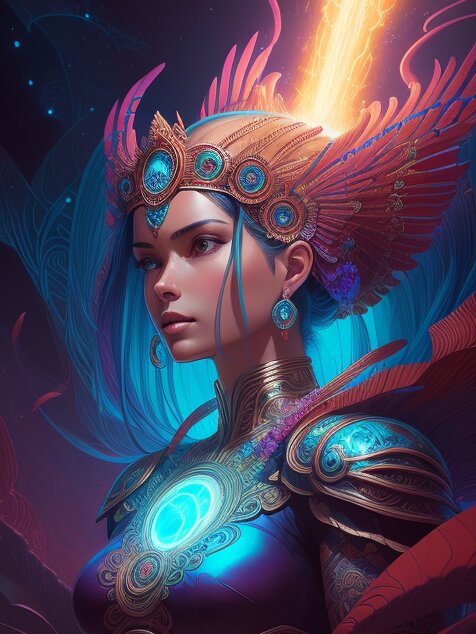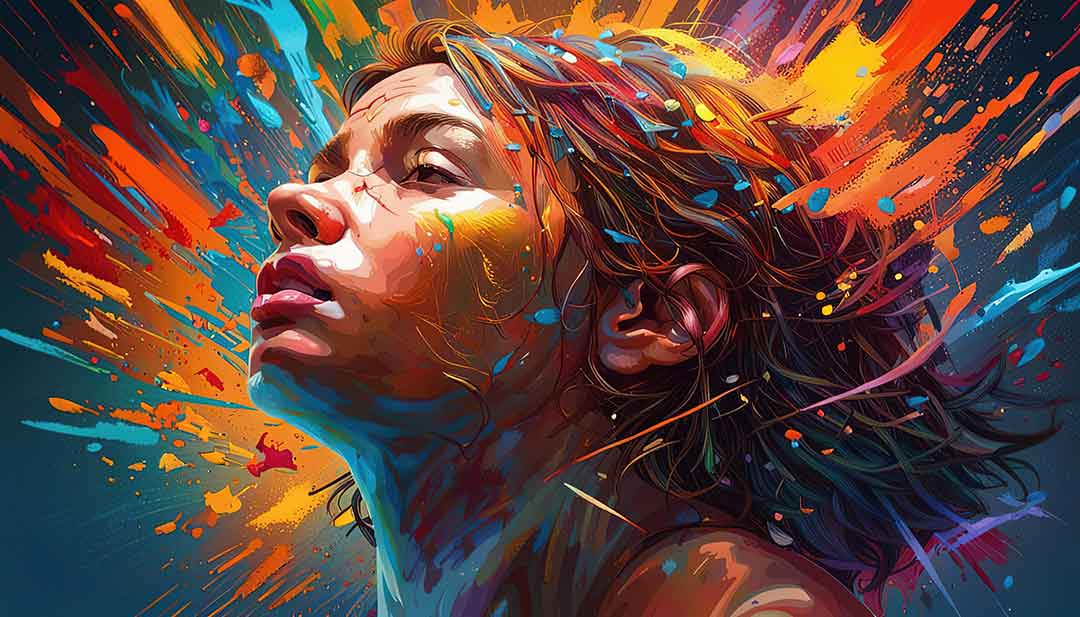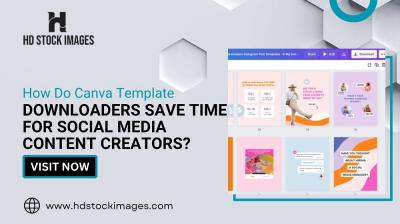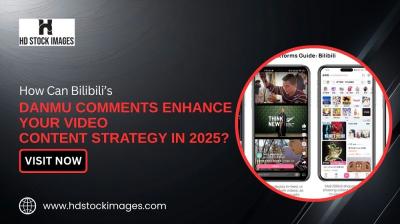The journey of AI in art creation is a fascinating tale of technology meeting creativity. Over the years, AI has evolved from a mere concept in science fiction to a powerful tool in the hands of artists and designers. Let's take a look at the key milestones in this evolution.
Early Beginnings: The story of AI in art begins in the mid-20th century. Initial experiments involved simple shapes and patterns generated by algorithms. These were more mathematical than artistic, but they laid the groundwork for future developments.
1990s - Neural Networks: The introduction of neural networks marked a significant advancement. Artists and programmers began experimenting with these networks to create more complex and abstract forms of art.
Early 2000s - Evolutionary Art: This era saw the advent of evolutionary algorithms. These algorithms simulated the process of natural selection to create art, resulting in more dynamic and unexpected artistic outputs.
2010s - Deep Learning and GANs: The real game-changer came with deep learning and Generative Adversarial Networks (GANs). This technology enabled the creation of highly realistic images and even the replication of styles of famous artists.
Present Day: Today, AI art generators, like the one provided by
HDStockImages, are accessible to everyone. They allow users to generate art simply by describing their vision in text. This democratization of art creation signifies a new era where technology and human creativity collaborate in unprecedented ways.The following table highlights the evolution timeline:
| Time Period | Development |
|---|
| Mid-20th Century | Algorithmic Patterns and Shapes |
| 1990s | Introduction of Neural Networks |
| Early 2000s | Evolutionary Algorithms in Art |
| 2010s | Deep Learning and GANs |
| Present Day | Accessible AI Art Generators |
In conclusion, the evolution of AI in art creation is a testament to the boundless potential of technology when merged with human creativity. From simple algorithmic patterns to complex, deep-learning-based art generation, AI has not only changed the way art is made but also expanded the definition of what art can be.
Understanding How AI Image Generators Work

AI image generators are fascinating tools that blend technology with creativity. They use complex algorithms and machine learning techniques to create visual art from textual inputs or data patterns. Understanding how these generators work is key to appreciating the art they produce. Let's break down the process.
Input and Interpretation: The first step involves inputting a text description or data set into the AI system. This input acts as a prompt or guideline for the kind of image to be generated.
Processing Through Neural Networks: AI image generators use neural networks, specifically a type called Generative Adversarial Networks (GANs), to process this input. These networks consist of two parts:
- Generator: This component creates the image based on the input data.
- Discriminator: This part evaluates the generated image against a set of criteria or real images to determine its authenticity or accuracy.
The interaction between these two components leads to the creation of highly detailed and accurate images.
Learning and Refinement: One of the key features of AI image generators is their ability to learn. As they create more images and receive feedback, they refine their process, leading to more sophisticated outputs over time.
Output: The final step is the generation of an image that aligns with the initial input. This output can range from realistic interpretations to abstract representations, depending on the nature of the input and the sophistication of the AI.Here's a simplified illustration of the process:
| Step | Description |
|---|
| Input | Textual or data input by the user |
| Processing | Neural networks (GANs) process the input |
| Learning | AI refines its techniques with more data |
| Output | Generation of the final image |
The technology behind AI image generators like those on
HDStockImages represents a significant leap in digital creativity. By understanding the mechanics of these tools, we gain a deeper appreciation for the art they produce and the limitless possibilities they offer.
Benefits of Using AI for Generating Art
The integration of Artificial Intelligence in art creation has opened up a world of possibilities for artists, designers, and enthusiasts alike. AI art generators, such as the one offered by HDStockImages, bring with them a host of benefits that are changing the landscape of digital art creation. Here are some key advantages:
- Unlimited Creativity: AI enables the creation of art that might be impossible or extremely challenging for human artists. It can generate unique combinations of styles, textures, and concepts, pushing the boundaries of creativity.
- Time Efficiency: Creating detailed artworks can be time-consuming. AI significantly reduces the time taken to produce complex pieces, allowing for quicker turnaround times in projects.
- Accessibility: AI art generators have made art creation more accessible. People without formal art training can now produce high-quality artworks using these tools.
- Customization: AI allows for high levels of customization. Users can input specific requirements and preferences, resulting in personalized artworks that meet their exact needs.
- Experimentation and Learning: These tools provide an excellent platform for experimentation. Artists can try out new styles and techniques without the risk associated with traditional methods.
- Cost-Effectiveness: AI art generators can be a more cost-effective solution compared to traditional art creation methods, especially for large-scale or repetitive tasks.
Here's a comparative analysis to highlight the advantages:
| Aspect | Traditional Art Creation | AI Art Generation |
|---|
| Creativity Limits | Limited by human capability | Nearly limitless possibilities |
| Time Efficiency | Time-intensive processes | Quick generation of complex images |
| Accessibility | Requires specific skills and training | Accessible to anyone |
| Customization | Limited by artist's skill and time | Highly customizable based on input |
| Cost | Can be expensive | More cost-effective for various projects |
The benefits of using AI for generating art are clear and impactful. They not only enhance the artistic process but also democratize art creation, making it more inclusive and innovative.
Exploring the Features of Free AI Art Generators
Free AI art generators, like the one provided by HDStockImages, offer a range of impressive features that make the art creation process both innovative and accessible. These features are designed to cater to a variety of artistic needs and preferences, making them ideal for a wide range of users. Let's explore some of the key features that set these AI art generators apart.
- User-Friendly Interface: One of the most notable features is the intuitive and easy-to-use interface. This ensures that even those with minimal technical expertise can navigate and use the tool effectively.
- Text-to-Image Conversion: Users can input text descriptions, and the AI translates these into visual art. This feature allows for the creation of images that are closely aligned with the user's vision.
- Vast Style Range: These generators offer a wide range of styles, from classical art to contemporary designs, enabling users to explore various artistic expressions.
- Customization Options: Users have the ability to customize different aspects of their artwork, including color schemes, dimensions, and overall style.
- High-Resolution Outputs: The AI generates high-quality, high-resolution images, suitable for both digital and print mediums.
- Rapid Generation: AI art generators can produce artworks in a matter of minutes, a significant advantage over traditional methods that can take hours or days.
- Constant Learning and Improvement: These AI tools continually learn from new data and user inputs, leading to improved performance and more sophisticated artworks over time.
To provide a clearer comparison with traditional art creation methods, here's a table:
| Feature | Traditional Art | AI Art Generators |
|---|
| Interface | Requires artistic skills | User-friendly, no prior skills needed |
| Style Range | Limited by artist’s expertise | Extensive and varied styles |
| Customization | Limited and time-consuming | Highly customizable and quick |
| Resolution | Dependent on medium and skill | Consistently high-resolution |
| Creation Time | Varies, generally lengthy | Rapid, efficient generation |
These features demonstrate why free AI art generators are becoming increasingly popular. They offer an accessible, efficient, and flexible approach to art creation, making them an attractive option for both amateur and professional creators.
Comparative Analysis: AI Art Generators vs. Traditional Art Methods
The advent of AI art generators has introduced a new dimension to the world of art, offering a novel approach that contrasts with traditional art methods. While both have their unique merits, a comparative analysis helps in understanding their differences and potential applications. Here's an in-depth look at how AI art generators stack up against traditional art methods.
| Criteria | Traditional Art Methods | AI Art Generators |
|---|
| Creativity and Originality | Limited by the artist's imagination and skill. | Can generate unique, unforeseen artwork based on algorithmic interpretations. |
| Time and Efficiency | Time-consuming, depending on the complexity and the artist's skill level. | Quick and efficient, capable of producing art in a matter of minutes. |
| Accessibility | Requires specific artistic skills and training. | Accessible to anyone, regardless of artistic skill. |
| Customization | Highly customizable but time-intensive. | Allows for easy customization with instant results. |
| Cost | Can be expensive, factoring in materials and time. | Cost-effective, especially for digital outputs. |
| Medium and Style Flexibility | Dependent on the artist's proficiency in various mediums and styles. | Offers a wide range of styles and can easily mimic different mediums. |
| Reproducibility | Difficult to replicate exact pieces. | Easy reproduction of the same artwork multiple times. |
Key Differences:- Creativity Boundaries: Traditional art is deeply personal and reflects the artist's own skills and creativity. In contrast, AI art generators can push beyond human creativity limits, offering novel and often surprising outputs.
- Technical Skills: Traditional art methods require significant skill and practice, whereas AI art generators are accessible to a wider audience without the need for technical art skills.
- Production Time: AI art generators excel in rapid production, making them ideal for projects with tight deadlines.
Understanding these differences is crucial in recognizing the value and application of both traditional and AI-driven art forms. While AI art generators offer efficiency and accessibility, traditional art methods remain invaluable for their personal touch and the skill involved in their creation.
Practical Tips for Creating Art with AI Generators
Using AI art generators effectively requires more than just inputting a prompt and waiting for the result. To truly leverage the potential of AI in art creation, here are some practical tips and best practices to keep in mind:
- Define Clear Objectives: Before starting, have a clear idea of what you want to create. This helps in formulating precise prompts and getting more accurate results from the AI.
- Experiment with Descriptive Prompts: The more descriptive and detailed your prompt, the better the AI can understand and interpret your vision. Experiment with various adjectives and descriptive phrases.
- Understand the Tool's Capabilities: Familiarize yourself with the specific features and limitations of the AI art generator you are using. This knowledge will help you in maximizing its potential.
- Utilize Iterative Creation: Don’t expect perfection in the first attempt. Use the initial outputs as a starting point and iteratively refine your prompts to achieve the desired result.
- Blend AI with Traditional Techniques: Consider using AI-generated art as a base and then applying traditional art techniques to enhance and personalize the artwork.
- Stay Updated on AI Developments: AI technology is rapidly evolving. Staying informed about the latest advancements can provide you with new tools and techniques for your art creation.
Here's a quick checklist to guide you through the process:
| Step | Action |
|---|
| 1. Objective Setting | Define what you want to achieve with your AI-generated art. |
| 2. Prompt Crafting | Create detailed, descriptive prompts for better output. |
| 3. Tool Exploration | Learn the features and limitations of your chosen AI art generator. |
| 4. Iterative Process | Refine your art through multiple iterations. |
| 5. Hybrid Techniques | Combine AI art with traditional editing or painting methods. |
| 6. Stay Informed | Keep up-to-date with AI technology advancements. |
Remember: AI art creation is a blend of science and creativity. While the AI provides the tools and capabilities, the human element of creativity and vision is what truly brings the art to life.
The integration of artificial intelligence in the field of art is not just transforming current artistic methods but also shaping the future of creativity. As we look ahead, several trends and advancements in AI technology are poised to redefine the boundaries of art. Here's a glimpse into what the future may hold for art and AI technology.
- Enhanced Collaborative Art: We will likely see more profound collaborations between AI and human artists, where AI tools are not just assistants but creative partners, bringing unique elements to the artwork.
- Personalized Art Experiences: AI may enable highly personalized art experiences, adapting to individual preferences and potentially even emotions, making art more interactive and immersive.
- Evolution of Artistic Styles: AI's ability to learn and evolve can lead to the development of new artistic styles and genres, some of which may be beyond human conception.
- Greater Accessibility in Art Creation: AI technology will make creating art more accessible to individuals without formal training, democratizing art creation and appreciation.
- Integration with Virtual and Augmented Reality: The blend of AI with VR and AR technologies is set to create new realms of immersive and interactive art experiences, pushing the boundaries of how art is experienced and perceived.
Here's a comparative outlook:
| Aspect | Current State | Projected Future |
|---|
| Collaboration | Basic AI assistance in art creation | Deep, intuitive collaboration between AI and artists |
| Artistic Styles | AI mimicking existing styles | Creation of new, AI-originated styles and genres |
| Accessibility | AI tools used by artists and hobbyists | Widespread use in mainstream art creation |
| Experience | Static digital art pieces | Dynamic, interactive art experiences |
Conclusion: The fusion of AI with art is not just a fleeting trend but a revolution in the making. As AI technology continues to evolve, it promises to unlock unprecedented creative possibilities, making the future of art an exciting realm of infinite potential.
FAQs on AI Image Generators
When it comes to AI image generators, there are often many questions about how they work, their capabilities, and their impact on the art world. Here are some frequently asked questions to help clarify these innovative tools.
1. What is an AI image generator?
An AI image generator is a tool that uses artificial intelligence algorithms to create images based on textual or visual inputs. These generators analyze vast amounts of data to learn artistic styles and can produce unique images that reflect the requested theme or concept.
2. How does an AI image generator work?
AI image generators typically use neural networks, particularly Generative Adversarial Networks (GANs), to create images. They learn from a dataset of existing images and generate new ones by understanding and mimicking artistic patterns and elements.
3. Can AI image generators create any type of image?
While AI image generators are quite versatile, their ability to create images depends on the training they have received and the complexity of the request. Some generators specialize in certain styles or subjects.
4. Are images created by AI truly original?
AI-generated images can be considered original in the sense that they are new creations, but they are derived from the data and patterns the AI has learned from existing artworks. Therefore, they are original yet influenced by pre-existing art.
5. Can AI image generators replicate the style of famous artists?
Yes, many AI image generators can replicate the style of famous artists by analyzing and learning from their artworks. However, the replication is typically an interpretation rather than an exact copy.
6. Are AI-generated images free to use?
The usage rights of AI-generated images depend on the terms and conditions of the platform or tool used to create them. Some may offer images for free use, while others may retain copyrights or require permissions.
7. How can AI art be distinguished from human-made art?
Distinguishing AI art from human-made art can be challenging, especially as AI technology advances. However, AI art might exhibit certain patterns or elements that are characteristic of algorithmic processes, which can be a telltale sign.
8. What is the future of AI in art?
The future of AI in art looks promising and is likely to involve more collaborative efforts between humans and AI, leading to new forms of art and creative expressions that were previously unimaginable.
Conclusion: The Impact of AI on Art and Creativity
The advent of AI in the realm of art and creativity marks a significant milestone in the evolution of artistic expression. As we have explored, AI art generators bring a plethora of new opportunities and challenges to the table. They are not just tools for creating images; they represent a paradigm shift in how we perceive and create art.AI's impact on art stretches far beyond mere technical assistance. It challenges our traditional notions of creativity, pushing the boundaries of what can be achieved through the synergy of human and machine intelligence. Artists are now empowered to explore uncharted territories of imagination, blending their creative instincts with AI's computational prowess to produce unique and captivating artworks.However, this fusion of AI with art also raises important questions about the nature of creativity and originality. As AI systems learn from existing artworks, they compel us to reconsider what it means to create something truly original and what the role of the artist is in this new landscape. The debate over the authenticity and value of AI-generated art is ongoing, sparking conversations in art communities and beyond.Looking to the future, AI's role in art is poised to grow, bringing more sophisticated tools and possibilities. This evolution promises to democratize art creation, making it more accessible to individuals without formal training while also offering new platforms for professional artists to express their vision.In conclusion, AI's integration into the art world is not just a technological advancement but a cultural and philosophical revolution. It invites us to reimagine the limits of creativity and to embrace the myriad ways in which art can be conceived and appreciated. As we move forward, the journey of AI in art will undoubtedly continue to be one of the most fascinating narratives of our time, reshaping the landscape of creativity in ways we have yet to fully comprehend.
 AI image generators are fascinating tools that blend technology with creativity. They use complex algorithms and machine learning techniques to create visual art from textual inputs or data patterns. Understanding how these generators work is key to appreciating the art they produce. Let's break down the process.Input and Interpretation: The first step involves inputting a text description or data set into the AI system. This input acts as a prompt or guideline for the kind of image to be generated.Processing Through Neural Networks: AI image generators use neural networks, specifically a type called Generative Adversarial Networks (GANs), to process this input. These networks consist of two parts:
AI image generators are fascinating tools that blend technology with creativity. They use complex algorithms and machine learning techniques to create visual art from textual inputs or data patterns. Understanding how these generators work is key to appreciating the art they produce. Let's break down the process.Input and Interpretation: The first step involves inputting a text description or data set into the AI system. This input acts as a prompt or guideline for the kind of image to be generated.Processing Through Neural Networks: AI image generators use neural networks, specifically a type called Generative Adversarial Networks (GANs), to process this input. These networks consist of two parts:
 admin
admin








